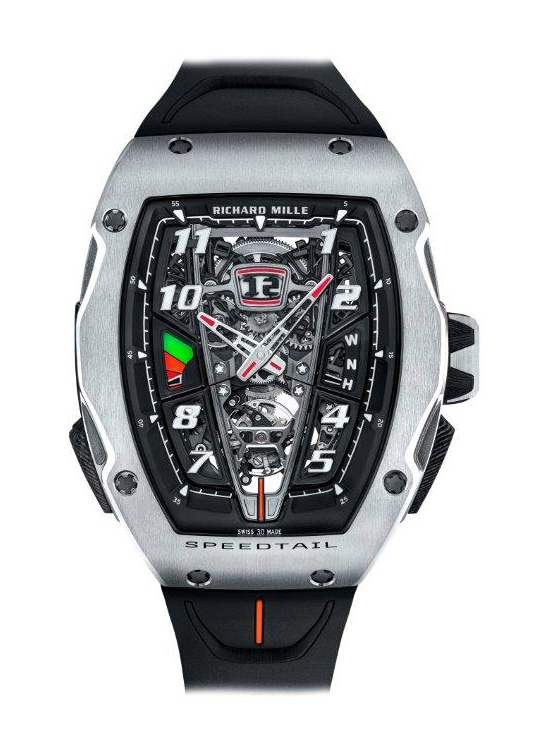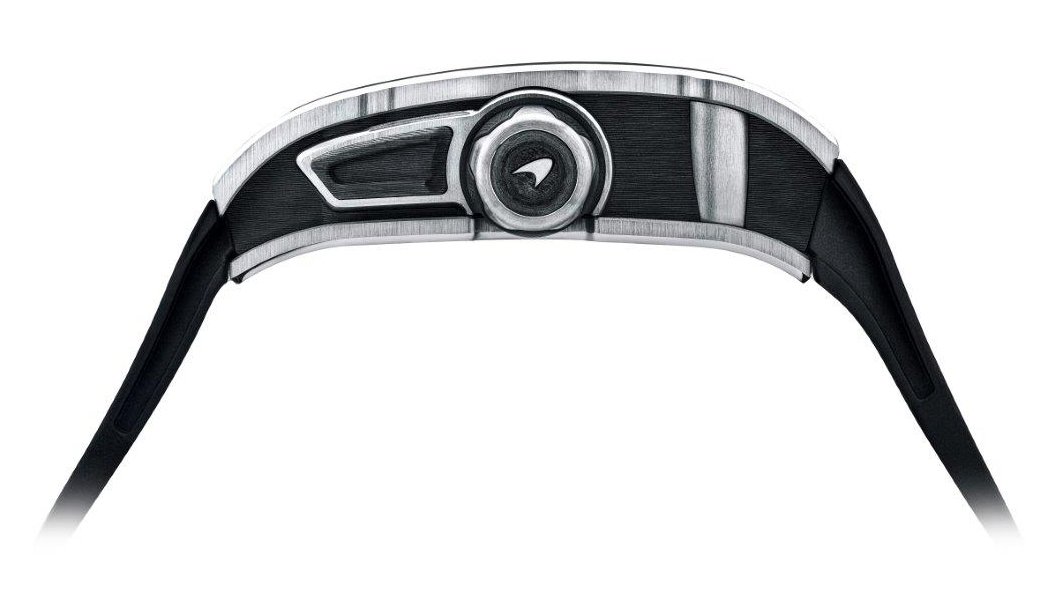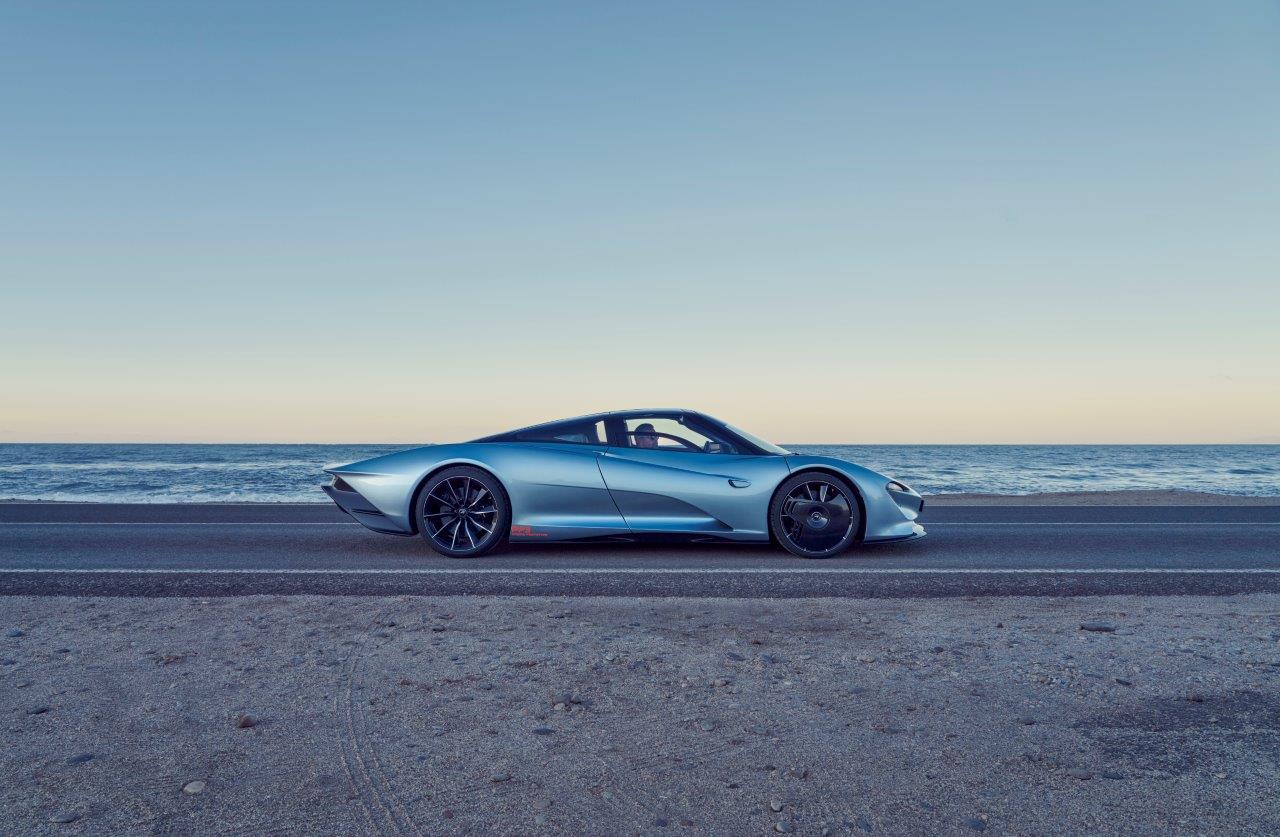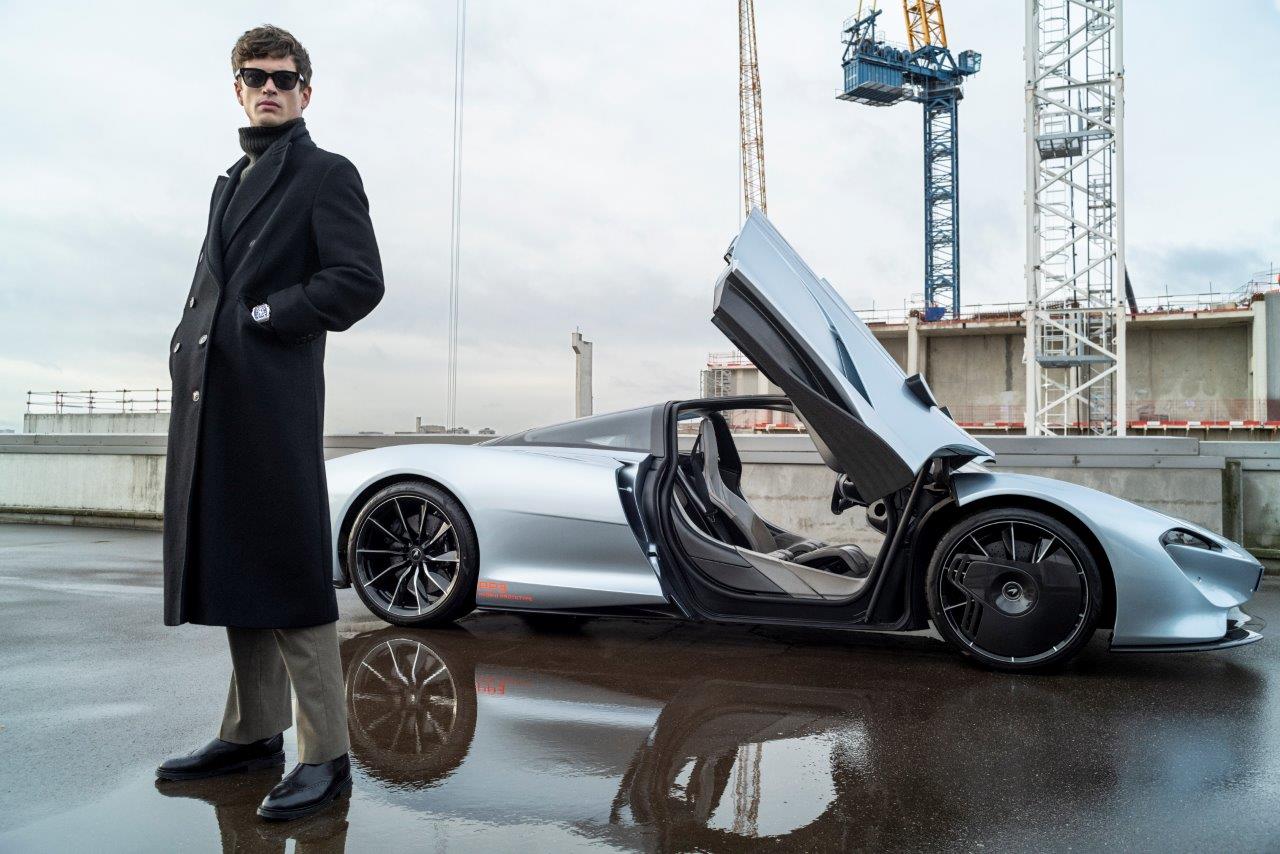According to Forbes, the super-rich got even wealthier during the pandemic, with the number of billionaires rising dramatically since 2019. If these freshly minted billionaires want to show their status, they might agonise over whether to buy a spectacular watch or a tooth-rattling supercar. Richard Mille and McLaren suggest both, and have created companion pieces for the wrist and the road. Simon de Burton takes a look under the hood of both the McLaren’s Speedtail hypercar and its timekeeping sibling the RM40-01.
Plenty of partnerships between watch brands and car marques have come and gone during the past couple of decades, but one that seems to make more sense than most is that between Richard Mille and McLaren.
Anyone who has seen the Sir Norman Foster-designed ‘MTC’ (McLaren Technology Centre) building and the McLaren Automotive factory that adjoins it in England, will know that the attention to detail paid to every aspect of the marque’s businesses — and there are several beyond that of car making — is as meticulous as you’ll find in any Swiss watch manufacture.
But what makes McLaren a perfect fit with Richard Mille is the two firm’s joint obsession with pushing the boundaries of their respective fields in terms of engineering and materials in a way that much of the competition likes to pretend to emulate but, in reality, simply doesn’t.
Were we feeling whimsical, we could say the foundations of the RM/McLaren partnership date back to 1966 when the then 15-year-old Richard Mille’s father took him to the Monaco Grand Prix where he saw Bruce McLaren driving the M2B, the very first McLaren Formula One car.

The occasion made such an impression on Mr Mille that he hunted down that very car 10 years ago to add to his stable of other competition McLarens, which now numbers seven and includes models designed for both F1 and CanAm racing.
It was partly Mr Mille’s personal enthusiasm for McLaren that led to the brand signing a 10-year partnership with the marque in 2017, the first fruit of which was the high-tech, high-priced RM50-03 split-seconds tourbillon chronograph — the world’s lightest watch of its type and, at around $1 million, certainly one of the most expensive.
The following year’s Geneva motor show, meanwhile, saw the simultaneous unveiling of the limited edition McLaren Senna and the Richard Mille RM11-03 McLaren flyback chronograph.
The watch emulated the car’s ‘explosion in a paint factory’ livery with an ultra-light case made from Carbon TPT (Thin Ply Technology) interlaced with orange quartz carbon — the colour both reflecting Mclaren’s signature hue and making the 50 by 44.5mm watch absolutely un-missable at 30 paces.
The third car in McLaren’s ‘Ultimate’ series (following the legendary F1 of the 1990s and the P1 of 2012), the Senna, was a racer-for-the road based on the existing 720S, but with more power and with less weight. Just 500 were made (costing $800,000 apiece) along with 75 even more extreme, track-only GTR versions priced at £1m.
But only a few months after the launch of the Senna, McLaren announced its intention to create ‘the world’s first Hyper GT’ in the form of the Speedtail, the car that has been called the spiritual successor to the legendary F1 which, 30 years after launch, still holds the record for being the fastest normally-aspirated production car in the world.
Just as the F1 did, the Speedtail takes the hypercar concept to a whole new level. With a central driving position and a passenger seat either side (again like the F1) it features a 1,055 horsepower hybrid powertrain that enables it to cover the ground at 112 meters per second when travelling at its top speed of 250mph.
The all-carbon Speedtail bristles with scientifically-developed aerodynamic enhancements, ranging from air intakes at the side of its headlamps to a roof-mounted NACA duct and from a streamlined underbody to a pair of flexible, rear-mounted ailerons.
But even before the plan to open the order books on the Speedtail was made public, Richard Mille and McLaren had already started on a project to create a suitably extreme watch to complement it.
And now we see it: the RM40-01 self-winding tourbillon, a truly impressive piece of micro-engineering that has been entirely developed around the three-seater Speedtail’s distinctive ‘teardrop’ silhouette.


It’s said to have taken Richard Mille’s casing department 2,800 hours spread across 18 months to perfect the design, which both mimics the form of a water droplet and alludes to the car’s aerodynamic features — the bezel indentations evoke the bonnet openings, the push-pieces recall the air outlets behind the front wheels.
No fewer than five prototypes were required in order to perfect the case, mainly because it is significantly wider at 12 o’clock than at six o’clock and has a taper between the titanium bezel and the back, the two being held together with unequal length titanium pillars to form a ‘sandwich’ with the Carbon TPT band.
The unique design inevitably demanded a unique movement, and the RM40-01’s CRMT4 ‘engine’ took a claimed 8,600 hours to develop. Comprising 603 components, it is made largely from titanium with a platinum and red gold winding rotor inspired by the car’s bonnet and the barrel-setting by its roof line.
The mechanism’s curve from 12 o’clock to six o’clock is based on the brushed metal divider between the car’s cockpit and its bodywork, and the orange line running from the lower part of the movement and on to the strap recalls the vertical stoplight mounted in the Speedtail’s rear screen.
And, speaking of glass, the sapphire crystal that protects the 52mm by 42mm watch is tapered to a mere 0.2 of a millimetre – yet still offers water resistance down to 50 metres.
The Richard Mille RM 40-01 automatic tourbillon McLaren Speedtail will be limited to 106 examples to reflect the number of cars being produced.
It costs CHF 900,000 plus taxes.
McLaren’s entry level GT model starts at CHF 210,000 and you need to be a billionaire collector to get on the waiting list for either. There is a case study for economics students in there somewhere.
Regardless of whether or not you’re a fan of car watches, it would be difficult to deny that this is a spectacular addition to the genre and one which, in terms of its ‘authenticity’ to the marque it complements, is going to be very difficult to beat.
Indeed, Richard Mille seems to have set the bar for its next McLaren watch impossibly high — and it has certainly set us wondering what the first watch in its more recently announced collaboration with Ferrari might be.


